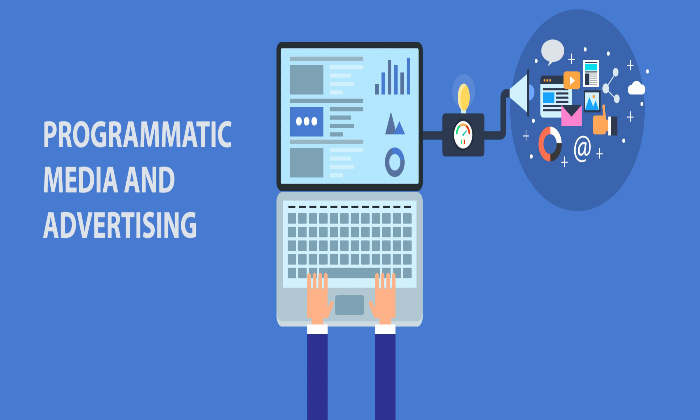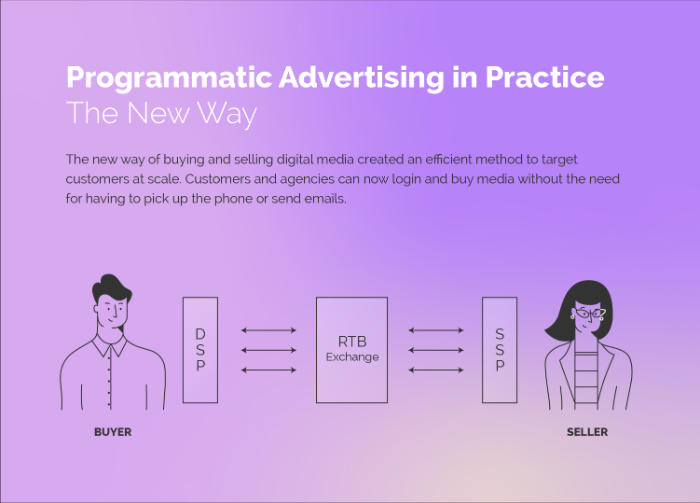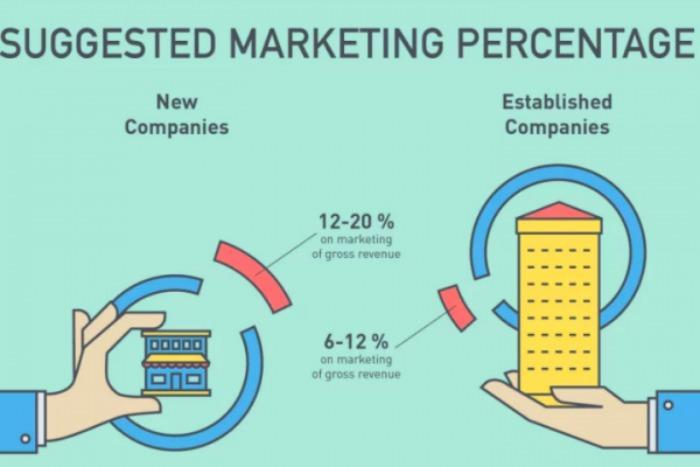
I’m going to go ahead and say it: programmatic advertising is the future. Although it’s a relatively new concept compared with other forms of marketing, spending on programmatic advertising is growing yearly.
Omnichannel marketing, audio and in-game advertising, voice-activated advertising, and 5G are just some of the factors fueling its growth, and they’re going to take programmatic advertising into 2023 and beyond.
Now, enough about the future. What if you’re not so familiar with this type of marketing? How does programmatic advertising work? How are others using it? More importantly, is it right for your business?
In this article, I discuss all of that and more, starting with the basics.
What Is Programmatic Advertising?
Programmatic advertising is the automated buying and selling of digital advertising space over the internet.
Here’s how it works.
Two main platforms are involved: a supply-side platform and a demand-side platform.
By using programmatic technology, ad space gets bought and sold in real-time through automated auctions on a demand-side platform (DSP). This process happens instantaneously, with the winning ad displayed on the publisher’s website or app. This means that ads can be bought and sold more efficiently and at a lower cost.
When targeting ads, marketers first identify their target audience and then set parameters, such as geographic location, age, gender, interests, etc. They also specify how much they want to pay for each ad view or click.
If you’d like a deeper dive into this topic, here’s a detailed article on programmatic buying for PPC.
A supply-side platform (SSP) is an automated platform that enables the sale of ad space to businesses.

It is hugely popular, with top brands like Lacoste, Aldi, and Turner Sports using it, and global programmatic advertising spend is set to exceed $700 billion a year by 2026.
What Makes It Successful?
Why the growing popularity?
Aside from the ease of automation, programmatic advertising allows for better targeting of specific audiences. The golden rule with this type of marketing is it only does well if you target the right prospects with your ads.
Programmatic advertising relies on data, meaning marketers can direct their ads to people based on their interests, location, internet searches, or even what they’ve bought before. All this makes the ads more relevant to the individual, and likely results in more clicks and conversions.
For instance, if you’re selling health foods in California, you’d want to target fitness enthusiasts in the area.
Publishers also benefit from programmatic advertising because it allows them to sell ad space more efficiently. They can target specific buyers interested in their content and sell ad space on an impression-by-impression basis.
Second, programmatic advertising is efficient and effective. For many marketers, programmatic advertising is an ideal hands-off approach to buying ads; it allows advertisers to buy ad space in real-time, which means they can get their ads in front of the right people quickly and at a lower cost than traditional methods.
Third, programmatic advertising is constantly evolving. Marketers can use it to target not only consumers, but also businesses. As new technologies emerge, programmatic advertising is likely to grow and adapt, becoming even more effective.
However, perhaps the main reason behind programmatic advertising’s success is simple: it gets results.
For example, when Grapeseedmedia.com worked with Lights.com, the campaign created a Return on Advertising Spend (ROAS) of 316 percent, a Cost Per Acquisition (CPA) of $26, 179 newsletter signups, and a 25 cents cost per page visit. This is four times the industry benchmark.
Another case study shows how a campaign for Grand-Hyatt achieved revenues of $1, 647,787 during the nine months it worked with the agency. In addition, by using display advertising, Facebook, and Google, the agency gained:
- A 1,017 percent ROAS.
- Over 3,000 Facebook page likes
- A $275 average daily rate, which is $12 higher than the overall average
- Along with 2.5 times more room nights from the Hyatt.com website.
The strategy behind the campaign included:
- Showing messages to people actively searching and engaging with Google’s search results.
- Focusing on users depending on their travel patterns to New York by analyzing data from Hertz and American Airlines, among others.
- Targeting audiences in the trip planning phase of the customer journey
Now, let’s look at the different types of programmatic advertising available.
What Are the Different Types of Programmatic Advertising?
There are three types of programmatic advertising and four main formats available:
Open Auctions: Otherwise known as real-time bidding (RTB). This process is where ad inventory is bought and sold via a DSP or SSP.
Private Auctions: These are sometimes called ‘closed deals’ and are only open to invited bidders.
Preferred deals: Rather than auctioning ads, these provide programmatic advertising at a fixed price to a buyer.
Typically, programmatic advertising comes in four formats: display, video, banner, and in-app ads.
- Video advertising is ideal for grabbing people’s attention through imagery, narratives, and sound.
- Banner ads consist of a graphical image or animation placed on a web page, along with a URL to direct visitors to a website.
- Native advertising is a form of online advertising that matches the form and function of the platform on which it appears. Native ads are less intrusive than banner ads and other online advertising, and can appear in various formats, including in-feed content, search results, and recommendations.
- In-app ads are a type of advertising shown within an app. This can include banner ads, interstitial ads (full-screen ads), video ads, and native ads. In-app ads can be a great way to monetize an app and generate revenue.
Is Programmatic Advertising the Right Fit for Your Business?
You’ve read all about the benefits, but how do you know if programmatic advertising is the right fit for your business? That depends on a few factors, such as your target audience and marketing goals.
Below are some reasons why you might want to consider using programmatic advertising:
Volume targeting: if you’re looking to reach a large audience quickly and easily, programmatic advertising may be a good fit for you. Through automation, programmatic platforms allow you to focus on specific audiences according to interests and behaviors to reach more people in less time.
Managing your budget: As programmatic advertising lets you target specific groups, it can be budget-friendly. However, depending on the size of your business, the advice is to spend no more than 6-20 percent of your overall marketing.

- What are your goals? Programmatic advertising can help you achieve various marketing goals, such as increasing brand awareness, generating leads, or driving sales.
- What type of media do you want to use? Programmatic advertising offers you a variety of media types, including digital and in-app ads.
- You need to be comfortable with the idea of automation and trusting algorithms to make decisions about where your ads should run.
Additionally, there are occasions when programmatic advertising may not be for you. If view-through-conversions aren’t of value to you and you haven’t tried display advertising before, then programmatic advertising may not be the ideal match.
How Much Does It Cost?
Programmatic advertising uses cost per mile (CPM), meaning you’re charged per 1,000 impressions.
However, other factors impact the cost of programmatic advertising. These depend on several factors, such as the type of system used (real-time bidding or private exchange), the amount of competition for ad space, and the quality of the ad space.
In addition, prices depend on:
- Targeting
- Industry devices
- Ad format (video, display, etc.)

Another benefit to consider is how programmatic advertising avoids the risk of overpaying for ads, which could save you money long-term.
Usually, costs can vary from 0.50 – $2.00 per impression, which is more affordable than traditional advertising.
How Do You Integrate Programmatic Into Your Existing Ad Plans?
Suppose you’re looking to introduce programmatic advertising into your marketing mix. In that case, you can do a few things to help get your campaigns off to a flying start, like:
Defining your objectives: What do you want to achieve with your programmatic advertising? Do you want to increase brand awareness, drive increased website traffic, generate more leads, or improve your ROI? Once you know your objectives, you can start setting specific goals and determine how to measure them.
Set realistic goals: It’s important to set achievable goals; otherwise, you’ll only be setting yourself up for disappointment. Be sure to consider factors like budget and available resources when setting your goals.
Decide on your Key Performance Indicators (KPIs): KPIs measure if you’re on target regarding your business goals. For example, if you were working on SEO, featured snippets might be a desired KPI. Everyone wants something different from their programmatic advertising campaigns. Therefore, the KPIs you choose stem from what you’re hoping to achieve and what success means to you. Some key performance indicators to keep an eye on include:
- click-through rate (CTR), which is a metric that measures how often people who see your ad click on it. A high CTR means that your ad is relevant and interesting to your audience.
- cost per click (CPC): CPC is an important metric for measuring the success of online advertising campaigns. By understanding how much each click costs, advertisers can better assess the ROI of their campaigns and make necessary adjustments to ensure they are getting the most bang for their buck.
- conversion rate, or the percentage of people that make a purchase when they visit your website.
- cost per acquisition, which is the cost of acquiring a new customer through an ad campaign.
Decide on the type of ads to use: You can select from In-app ads for getting more downloads, banner ads for brand awareness and retargeting, video advertising for engagement, and native advertising for brand awareness and engagement in a user-friendly format.
Sign up for a DSP: Examples include Amazon DSP, MediaMath, or RocketFuel. However, there are plenty more, and it’s best to do your own comprehensive research before you decide which platform is right for you.
Create your budget: Some networks have pre-determined budgets, while with others, you work to your budget. There are a lot of different resources out there on how to optimize your budget.
Decide who to target: This is when it gets personal. Ideal customers are identified by many factors, including interests, buying behaviors, location, languages, operating systems, and plenty of other factors.
Choose your SSP: Turn to options like Google Ads Platform, AdSuite, or OpenX to get you started in your search.
Next, upload your creatives and set up your ad markups.
Use the above only as a guide, and follow the step-by-step instructions for your chosen platforms.
Once you’ve launched, analyze your data and keep tweaking until you get the results you’re looking for.
Finally, I’ve got another article for you if you’re looking for more ways to implement programmatic advertising.
Programmatic Advertising Success Stories
Now you see the potential of programmatic advertising, here’s a look at some success stories.
Agency Pubmatic worked with a Chinese mobile app games developer with an audience of 40 million. The developers sought a suitable in-app monetization solution to improve the overall customer experience and scale demand.
Pubmatic’s solution was an Openwrap SDK, which allows advertisers to optimize their in-apps earnings. The result was:
- A 10.6 percent daily average fill rate lift
- A 16.4 percent daily ARPU lift
- A 14 percent eCPM lift
For another example, World of Warcraft is one of the most popular online video games with a turnover of $6.9 billion. However, that doesn’t mean its makers, Blizzard, didn’t want to reach out to new audiences. It wanted an advertising campaign that would:
- Improve brand awareness and drive qualified traffic.
- Enhance awareness for upgrades and game launches.
- Develop a healthy return on ad spend.
- Increase traffic away from usual sources like Google, YouTube, and Facebook.
To achieve this, Advent Technology used in-app advertising in the form of rewarded video advertising. It also:
- Created a full-funnel retargeting solution.
- Allowed Blizzard to own the data.
- Used retargeted strategies to enhance re-engagement.
The campaign led to an 8.6 percent click-through rate, compared to YouTube’s average of 0.33 percent for audible and viewable on complete (AVOC).
FAQs
In the fast-approaching cookieless society, we’re likely to see more focus on customer engagement through impactful and engaging creative media based on quality over quantity, with more emphasis on engagement-driven metrics. Artificial intelligence is also likely to play a role in programmatic advertising in the future.
Programmatic advertising is a type of online advertising that uses computerized systems to purchase ad space in real-time. Advertisers bid on ad space through an auction system, with the highest bidder winning the ad spot.
Programmatic display advertising is a type of online advertising that uses programmatic technology to purchase ad space and target audiences.
It may sound like a new development, but programmatic advertising has been with us since 1994. The first banner ad was for AT&T’s ‘You Will’ advertising campaign.
Conclusion
If you’re looking for an effective and efficient way to reach potential customers, then programmatic advertising could be your answer.
Not only is programmatic advertising affordable and it can deliver you a high ROI, it automates buying digital ad space, saving you much-needed time.
Programmatic advertising also lets you target your ideal customers with precision, while delivering ads in real-time, potentially saving you money.
However, this type of advertising may not be suitable for everyone, especially if you haven’t started with regular digital marketing and don’t have a lot of data to go with.
Do you use programmatic advertising? How does it compare with other methods?
from Neil Patel's Digital Marketing Blog https://ift.tt/nJrRk38

No comments:
Post a Comment